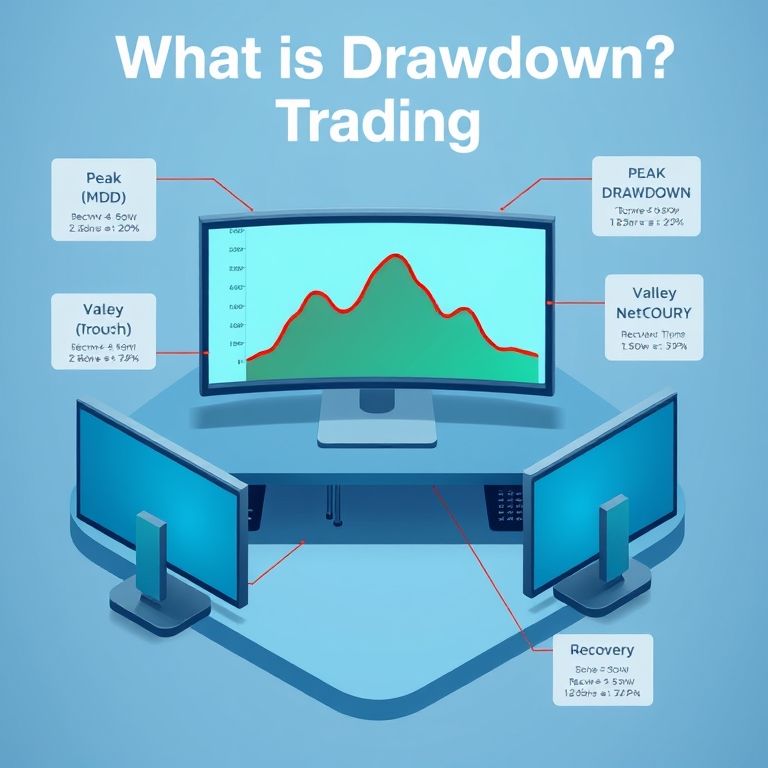what is drawdown trading
What is Drawdown Trading? Navigating Capital Protection and Growth in Modern Markets
Introduction
Imagine standing at a busy crossover where one wrong move can trim your gains or chip away at your capital. Drawdown trading is all about managing that risk—recognizing how far a portfolio can fall from its peak before it’s time to pause, reassess, and re-enter smarter. It’s not a gimmick; it’s a disciplined approach that blends risk controls with growth aims across today’s multi-asset playground.

What is drawdown trading?
Drawdown is the measure of how much value a portfolio loses from a previous high before it recovers. In practice, drawdown trading treats these peak-to-trough dips as a vital signal, not a bad luck episode. Traders set caps on how much drawdown they’re willing to tolerate in a given period, then design rules to prevent emotional reactions when the market tests those limits. Think of it as a capital-first mindset: protect the core, then chase opportunity when the math aligns.
Core principles and features
- Capital preservation as a core objective: the plan prioritizes keeping losses within a predefined range so recovery isn’t a race against time.
- Quantified risk per trade and dynamic sizing: risk per trade is kept small (for many traders, a fraction of a percent to a few percent of equity), adjusting position size as drawdown evolves.
- Systematic rules, not vibes: decisions follow pre-set thresholds for entries, exits, and stop placements, reducing impulsive moves.
- Transparent metrics: real-time drawdown, maximum drawdown, and recovery time are tracked to reveal true performance, not just winning streaks.
- Slippage and cost awareness: fees, spreads, and funding costs are factored into drawdown estimates, so the numbers reflect reality, not theory.
Asset class spotlight
- Forex: high liquidity can cushion some moves, but leverage can amplify drawdown quickly. A disciplined approach uses tiered leverage and tight stops to ride trends without letting a single swing erase months of work.
- Stock: drawdown discipline helps during earnings surprises or sector rotations. Balanced exposure and hedges can smooth equity curves during drawdown episodes.
- Crypto: volatility is the wild card. Drawdown controls matter, and robust risk checks—plus diversification across layers, chains, and protocols—are essential.
- Indices: broad exposure often reduces idiosyncratic risk, but macro shocks can still test drawdown rules. A diversified basket with disciplined rebalancing tends to hold up better.
- Options: drawdown thinking shines in risk-managed strategies like spreads, where downside is defined and capped.
- Commodities: supply shocks can cause quick moves. Clear drawdown limits paired with hedges (like futures or options) can prevent volatility from spiraling.
Reliability and leverage strategies
- Start with a hard risk cap: define your maximum acceptable drawdown for a week or month and build rules around it.
- Leverage with care: use conservative leverage aligned to your risk tolerance; higher leverage demands stricter stop levels and position sizing.
- Backtest and simulate: stress-test against drawdown-heavy periods and out-of-sample scenarios to gauge resilience.
- Use chart analysis tools wisely: trend lines, volatility bands, and correlation checks help you anticipate when drawdown might be coming and where to hide or hedge.
- Have a storyboard for drawdown events: a prewritten plan for reducing risk, rebalancing, or stepping back keeps you humane in the heat.
DeFi and the broader picture
Decentralized finance promises transparent price discovery and programmable risk controls, but it also amplifies new risks—smart contract bugs, liquidity shocks, and cross-chain fragility. Drawdown-focused traders lean into robust auditing, multi-sig wallets, and conservative collateralization when using decentralized margin and lending protocols. The goal is to keep drawdown under control while tapping the efficiency and open access DeFi provides.
Future trends: smart contracts, AI, and beyond
Smart-contract trading could automate risk controls with verifiable rules, while AI assists in monitoring drawdown signals across markets, flagging risk clusters, and suggesting reallocation. Expect more on-chain analytics, streaming risk dashboards, and plug-ins that connect charting tools with decentralized data feeds. The challenge will be maintaining security, transparency, and user education as markets become more automated.
Slogans and takeaways
- Drawdown trading: protect capital, fuel growth.
- Your peak-to-trough map—without losing your nerve.
- In a volatile world, steady risk controls unlock steady gains.
Living with drawdown trading means embracing discipline, not surrendering opportunity. As markets continue to evolve—from traditional forex and stocks to crypto and smart-contract ecosystems—the core idea stays the same: know your maximum loss, keep it small, and let your process guide the rest. If you’re curious about a framework that blends life-like risk awareness with modern tech, drawdown trading offers a pragmatic path forward.
YOU MAY ALSO LIKE




